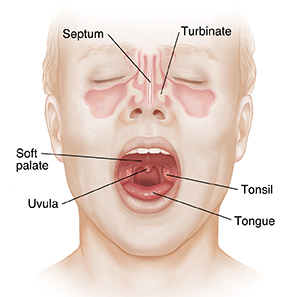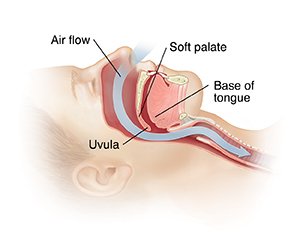When you breathe, air travels through passages in your nose and throat to reach your lungs. When these air passages are wide enough to let air flow freely, you breathe normally.
Nasal structures
The septum is the wall that divides the left half of the nose from the right half. Turbinates are ridges in the nasal passage. They help warm and moisturize air as it flows through the nose.
Throat structures
Air flows past soft, flexible structures where the mouth meets the throat. These structures are the soft palate, uvula, tonsils, and back of the tongue. Throat muscles hold these structures in place. While you sleep, the throat muscles relax a bit. But they normally stay tight enough to keep the airway open.



